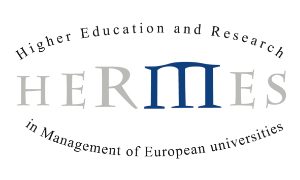ERASMUS+
NEW ERASMUS+ PROGRAM
The Erasmus+ programme aims to boost skills and employability, as well as modernising Education, Training, and Youth work. The seven year programme will have a budget of €14.7 billion; a 40% increasecompared to current spending levels, reflecting the EU’s commitment to investing in these areas.
Erasmus+ will provide opportunities for over 4 million Europeans to study, train, gain work experience and volunteer abroad.
Erasmus+ will support transnational partnerships among Education, Training, and Youth institutions and organisations to foster cooperation and bridge the worlds of Education and work in order to tackle the skills gaps we are facing in Europe.
It will also support national efforts to modernise Education, Training, and Youth systems. In the field of Sport, there will be support for grassroots projects and cross-border challenges such as combating match-fixing, doping, violence and racism.
Erasmus+ brings together seven existing EU programmes in the fields of Education, Training, and Youth; it will for the first time provide support for Sport. As an integrated programme, Erasmus+offers more opportunities for cooperation across the Education, Training, Youth, and Sport sectors and is easier to access than its predecessors, with simplified funding rules.
At the University of Pavia the Erasmus+ programme is managed by:
Servizio Relazioni Internazionali
International Mobility office
University of Pavia
Via Sant’Agostino, 1A
27100 Pavia
outgoing.erasmus@unipv.it
Tel. +39 0382.984004
E-mail: erasmus@unipv.it
RECOGNITION OF PERIODS OF STUDY ABROAD
The University of Pavia recognizes the ECTS (European Credit Transfer System) and has adopted, with the approval of the Academic Senate, a set of University Regulations for the recognition of educational activities carried out abroad by its students.
On the basis of the Erasmus Charter for Higher Education (ECHE), the University recognizes the principle of “full academic recognition” of the educational activities that students carry out abroad during the mobility period and is committed to recognizing the credits acquired by the student at the host institution, in accordance with what was agreed in the Learning Agreement.
EUROPEAN CREDIT TRANSFER SYSTEM (ECTS)
The European Credit Transfer and Accumulation System (ECTS) is a tool adopted by universities to make studies and courses more transparent. The aim is to facilitate student mobility from one country to another and to obtain recognition of study periods abroad. ECTS credits constitute learning based on the results of a given course of study and the relative workload.
The University of Pavia recognizes the equivalence 1 CFU = 1 ECTS.
Results obtained abroad are fully recognized, where possible, on the basis of comparison with the statistical grade distribution curves of the University of Pavia and partner institutions and, where this is not possible, on the basis of the grade conversion tables.
THE TABLES AND THE SCALE OF ECTS GRADES
The ECTS grade tables and scale are tools that facilitate the transfer of academic results (expressed in grades) between different assessment systems. They are adopted by the universities of the countries belonging to the European Higher Education Area and make it possible to convert the grades of one country into the grades of another country, according to rules shared at European level.
The University of Pavia in accordance with the ECTS Users’ Guide 2015 has developed conversion tables of ECTS grades by subject area, based on the percentage distribution of grades obtained by students enrolled in courses belonging to each area in the last three academic years. Within each area, the data are broken down by course of study (Bachelor’s degree, Master’s degree, and Single-cycle Master’s degree).
The tables also show the grade converted to the ECTS scale.
The ECTS scale is constructed according to the following rule:
grade A corresponds to the grades obtained by the best 10% of the students;
grade B corresponds to the grades obtained by the next 25%;
grade C corresponds to the grades obtained by the next 30%;
grade D corresponds to the grades obtained by the next 25%;
grade E corresponds to the grades obtained by the final 10%.
DEPARTMENT RECOGNIZING CREDITS METHOD
The Economic Faculty Council decides that, starting from the academic year 2006/2007, for students who have spent a period of study abroad with international mobility programs, for the purpose of recognition of exams taken at another foreign university, will be applied the table of conversion of ECTS grades with marks in thirtieths, as approved by the Faculty Council on June 12, 2006, which therefore will replace the existing validation tables for each partner country.
For the validation of exams within each grade range, reference will normally be made to the median grade.
The highest grade in the range may be assigned if the foreign exam corresponds to more credits than those foreseen for the Pavia exam for which validation is requested, or if the total sum of credits earned abroad is higher than that of the corresponding exams validated in Pavia. Furthermore, the highest grade in the range may be awarded if the student demonstrates that he/she has diligently completed all the credits foreseen in the appropriate study program (learning agreement) as approved prior to departure as well as in any subsequent modifications.
The lowest grade in the range may be used if the student’s work abroad falls somewhat short of what was agreed upon and approved in the study abroad program.
If the Transcript Of Records doesn’t show a clear correspondence between local grades and ECTS grades the PAVIA-ECTS table will be applied, vice versa reference will be made to the tables established with the partner universities.
The ECTS scale allows the transfer of grades only between universities in countries belonging to the European Higher Education Area that have adopted the same ECTS scale.




